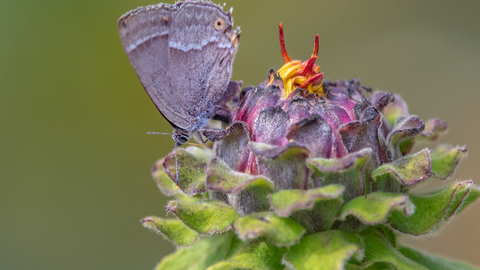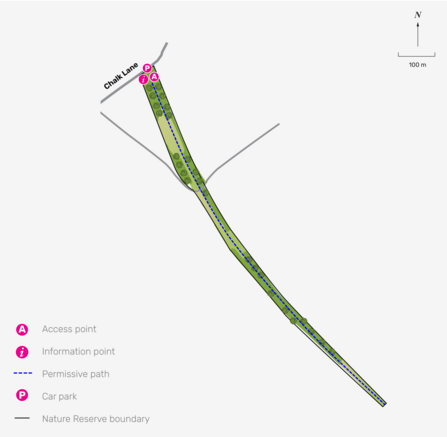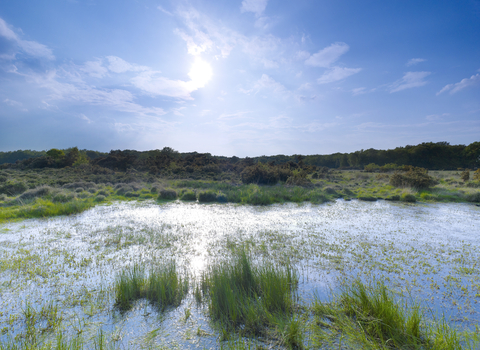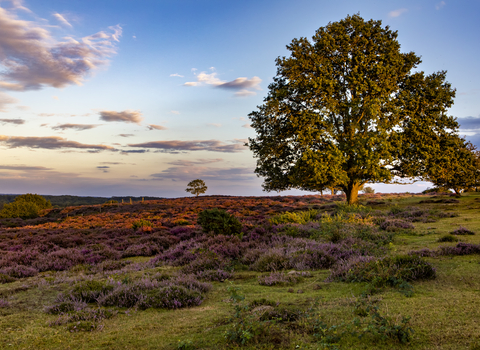
Narborough Railway Line (credit: Richard Osbourne)

Narborough Railway Line (credit: Richard Osbourne)

Purple hairstreak (credit: Steve Evans)
Narborough Railway Line
Location
Know before you go
Dogs
When to visit
Opening times
10am to 8pm (to 4pm in winter) every day, all year round except when sheep are on site.Best time to visit
Spring and summerAbout the reserve
Chalk grassland is rare in Norfolk. Although this reserve is small and effectively a short straight path, a keen naturalist can easily spend hours exploring this fascinating and unusual site. Once supporting the railway line from King’s Lynn to Dereham, this raised bank now sustains a range of interesting plants, including orchids and chalkland flowers.
This unique nature reserve is one of the best sites in the county for butterflies, with thirty species recorded here. It is one of the few places in Norfolk where the dingy skipper butterfly can be found. This small butterfly, which is in severe decline, has a mottled grey-brown appearance and can be seen flitting about in May and June. You might also spot the day-flying lace border moth, which is more commonly associated with the chalk hillsides of the South Downs. Narborough Railway Lane is the last remaining home of this species in Norfolk.
Habitat
Contact us
Environmental designation

Seasonal highlights
Spring
Birds: yellowhammer.
Invertebrates: dingy skipper butterfly.
Plants: early purple orchid.
Summer
Birds: whitethroat.
Invertebrates: brown argus butterfly.
Plants: eyebright, marsh helleborine.



